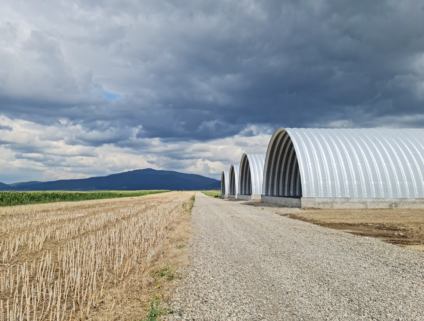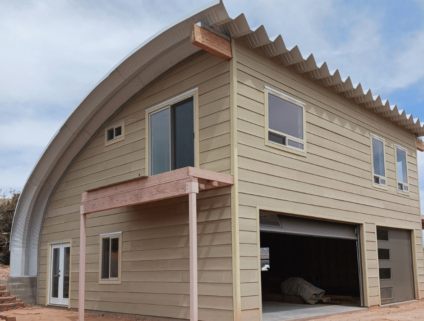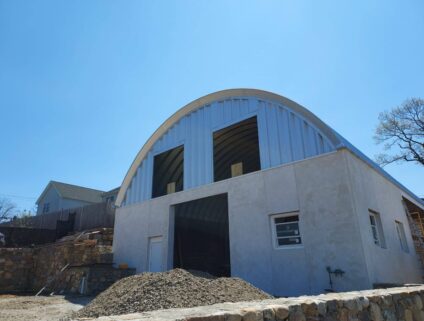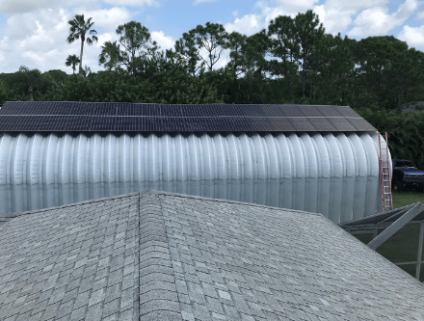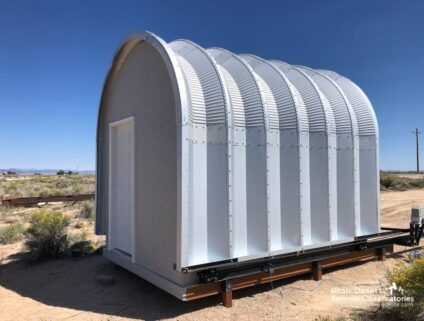What Makes A Salt Storage Building & Why It Matters
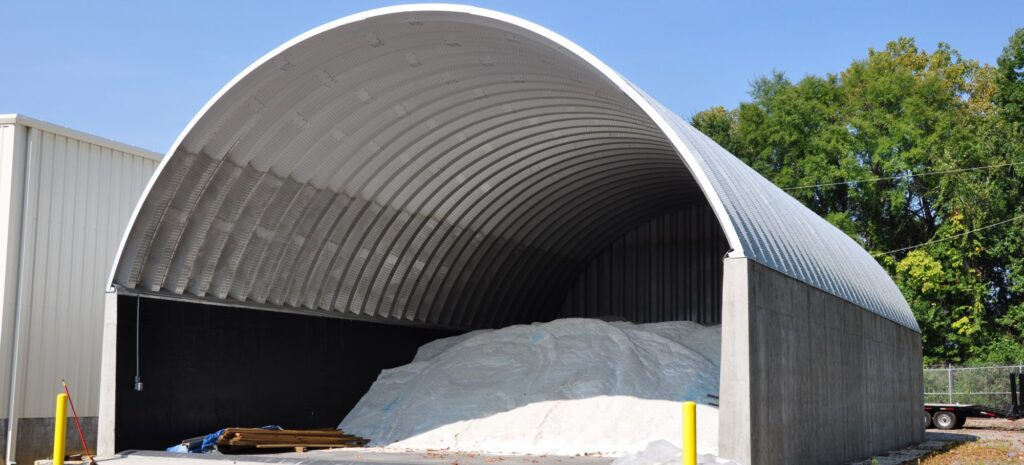
It’s never too early to start preparing for the winter! Even now, state transportation officials are in the process of preparing for or dealing with the inevitable drop in temperatures that can bring heavy snow and dangerous ice-covered roads. There is one solution that has been keeping drivers safe on the roads for years – salt.
There are many stipulations and best practices municipalities must comply with when it comes to salt storage regulations. Therefore, municipalities across the United States continually look for affordable and quick storage solutions that adhere to salt storage building requirements. One of the most popular and durable solutions is steel salt storage buildings which differ from traditional bulk material storage in key ways.
Salt Buildings Subject To Different Bulk Storage Codes
The Environmental Protection Agency reported that approximately 11 million tons of salt are used on roadways throughout the U.S. every winter and before that salt can be loaded onto trucks to be used it must be stored in a location that meets bulk storage regulations and logistical needs for corrosive substances such as salt.
According to the Salt Institute’s Handbook On Storing Salt, properly storing your salt is critical if you’re going to store it all. Protecting your rock salt supply with a salt storage building is one of the best ways to avoid contaminating streams, wells or groundwater with salt runoff, stop salt lumps, and loss due to precipitation.
Salt Building Requirements & Best Practices
In the past, highway departments stockpiled salt outdoors during the winter months. In recent years, scientists have determined that when a salt pile gets wet, the run-off finds its way into nearby streams and lakes or seeps into groundwater supplies. Salt must now be stockpiled indoors in industrial storage units. With a few other key differences from traditional storage buildings:
- Stem walls – Made from various materials designed to prevent seepage between the walls and ground.
- Waterproofing – Extra attention or materials are used to stop precipitation from entering the building.
- Open-ended or large doors – Accommodates loaders of different kinds to access and load the salt onto the trucks.
- Anti-corrosion – Salt is corrosive so building with an anti-corrosive material such as steel coated in Galvalume Plus keeps the building safe.
Each salt storage building requires the use of a stem wall foundation, typically made from concrete bin blocks, which provides a raised platform for the walls. This creates even more space for the salt, keeping it away from coming in contact with the steel structure.
Flashing and gussets are also used to prevent the passage of water into the steel structure from any angle—an important component to help ensure that the salt stays dry, as dry salt is not nearly as corrosive as wet salt.
Many salt storage buildings are open-ended, however, large garage doors can be added to buildings to fully enclose salt if needed. For areas with a lot of rain or inclement weather, this may be the best option.
Although salt is an extremely corrosive material, SteelMaster’s buildings are specifically designed to allow enough space to store a large, high pile of salt.
Bonus: Easy To Construct Salt Storage
Anthony Moore and his brother Wayne own A& W Leasing Corporation in McKenzie, TN, and have seven years of experience utilizing our steel buildings for salt storage through contracts awarded to them by the Tennessee Department of Transportation (TDOT).
In 2003, they bought six SteelMaster buildings for TDOT and erected the building themselves. Anthony says the building process was not difficult at all.
“SteelMaster buildings are priced right, made of top-quality steel, and are easy to construct,” says Anthony. “Since we began building salt storage buildings for TDOT in 2003, we have put up eight SteelMaster buildings altogether for that purpose. Each building stores 2,200 tons of salt, and there is plenty of room for the dump trucks and front-end loaders to get in there to dump the salt.”
SteelMaster’s buildings have several benefits that customers enjoy. They require very little maintenance, they are protected by our special Galvalume Plus Coating which offers strength, superior corrosion resistance, and an attractive bright appearance that provides excellent heat reflectivity. Each SteelMaster building also comes with a 50-year mill-backed warranty by ArcelorMittal (NYSE MT).
Anthony Moore’s positive experience with SteelMaster highlights the ease of construction and long-term benefits of our structures. Prepare for winter effectively with SteelMaster’s reliable salt storage buildings and ensure your roads remain safe and clear throughout the season.
Categories
Tags


